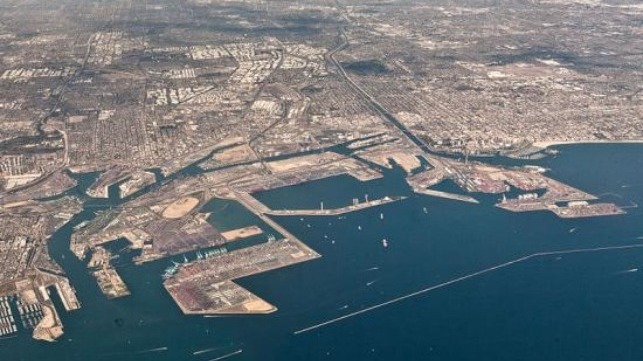Southern California's Ports Report Rebound for Strong July Volumes

Southern California’s two largest ports both reported strong results in July showing a rebound after volumes in the spring were impacted by the coronavirus and the continuing effects of the trade tensions between the United States and China. While both ports were encouraged by the results they remained cautious about their near-term outlook as the same issues continue to create uncertainty.
For the Port of Los Angeles, July was the seventh best month in the history of the port and the second best July performance for the port only topped by a stronger July 2019. Similarly, the neighboring Port of Long Beach reported its best July topping its previous record from June 2018. Both ports attributed the growth in volumes to an increase in consumer spending as well as a move by retailers and manufactures to replenish.
Both of the ports also reported a decline in canceled sailings as well as handling unscheduled visits. The Port of Los Angeles said that it experienced only two canceled sailings in July and was expected only one in August. So far, the shipping lines have not canceled any scheduled sailings to the Port of Los Angeles for September. Also during July, Los Angeles handled 11 calls that were not on the published schedule. The Port of Long Beach also noted that it saw a short-term increase in extra vessel visits to compensate for voyages that were canceled earlier this year.
The Port of Long Beach reported that total trade increased more than 21 percent in July 2020 versus the year-ago as it handled 753,081 cargo containers. They surpassed the previous record from June 2018 by nearly 900 TEUs. Contributing to Long Beach’s strong volumes was a more than 20 percent increase in import volumes as well as more than a 24 percent increase in exports. Year-to-date, volume at the Port of Long Beach is down less than three percent.
While volumes were down more than six percent year-over-year at the Port of Los Angeles, the 856,389 TEUs in July represented a 24 percent improvement over June 2020 making July the busiest month at the port in 2020. Los Angeles, however, still experienced a more than four percent decline in loaded imports and a nearly 22 percent decline in exports. Year-to-date, overall volume is down more than 15 percent at the Port of Los Angeles.
Both ports also pointed to their volumes of empty containers heading back overseas as a possibly encouraging sign for the future. Long Beached reported a nearly 21 percent increase in empty container volume during July to 138,602 TEUs. Empty container volume as the Port of Los Angeles was basically flat versus 2019 at 274,007 TEUs. The fact that shippers are again moving empty containers overseas is seen as a possible sign toward upcoming import volumes.
Despite the resurgence of COVID-19 in the state of California both ports continued to flow goods during the period uninterrupted. The Port of Los Angeles highlighted that while labor shifts are down 16 percent they are moving above the three-year average. Los Angeles has also provided COVID-19 to port employees and will be doing so again in September.
July’s results were encouraging for both ports. Looking forward Port of Los Angeles Executive Director Gene Seroka reported that “Preliminary data for August indicates solid volumes as retailers continue restocking inventories and preparing for the year-end holiday season.” However, he pointed out that imports had been down 10 of the last 11 months and more significantly exports had fallen in 20 of the last 21 months. Seroka believes that an improvement in exports is required for a long-term recovery at the ports.
